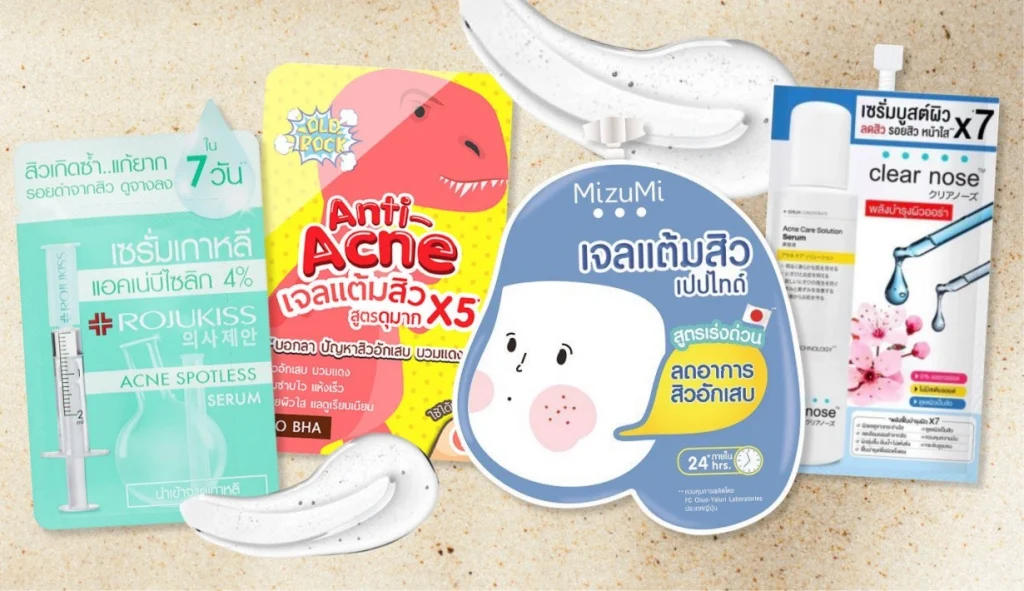

bmb168 สล็อตออนไลน์ แตกง่าย ไม่มีขั้นต่ำ
bmb168 เป็นเว็บไซต์สล็อตออนไลน์อันดับ 1 และได้รับความนิยมอย่างมากในอุตสาหกรรมเกมออนไลน์ มีการอัปเดตและข้อมูลเกมที่สำคัญเพื่อให้ผู้เล่นและนักพนันได้รับประสบการณ์ที่ดีขึ้น ที่นี่ผู้เล่นจะได้พบกับประสบการณ์การเล่นเกมออนไลน์ที่สนุกสนานและหลากหลายที่พวกเขาไม่เคยเห็นมาก่อน
สล็อต168 เป็นเกมที่ได้รับความนิยมและเหนือกาลเวลาสำหรับการทำเงินในยุคดิจิทัล และเนื่องจากมีหลากหลายรูปแบบและระบบเกมที่น่าสนใจ นักพนันสามารถสัมผัสประสบการณ์การเล่นเกมที่น่าตื่นเต้นและน่าทึ่ง dm168bet
คุณสามารถเลือกเล่นเกมได้หลากหลาย เช่น สล็อต ป๊อกเด้ง และเกมอื่นๆที่ให้ผลตอบแทนสูง นอกจากนี้ สล็อต168 ยังมีฟีเจอร์ที่ทำให้สมจริงยิ่งขึ้นเว็บไซต์นี้มีระบบการชำระเงินที่มั่นคงและไม่มีขั้นต่ำ ช่วยให้นักพนันได้รับรายได้ที่มั่นคงจากการเล่นเกมออนไลน์ นอกจากนี้คุณยังสามารถรับข้อเสนอแนะได้ทันทีเพื่อเตรียมพร้อมในการเล่นเกม
นอกจากนี้ สล็อต168 ยังมีสูตรลับที่จะช่วยให้ผู้เล่นออนไลน์มีเงินเพียงพอใช้จ่ายในช่วงปลายปี สมัครเล่นเกมที่นี่เพื่อสนุกกับการเล่นเกมออนไลน์สุดมันส์ผ่านเกม สล็อต bmb168

ดื่มด่ำไปกับโลกแห่งเกมออนไลน์ที่สนุกสนาน
amb 168 auto สามารถเล่นเกมสล็อตและเล่นออนไลน์ได้ทั้งทางเว็บและมือถือ ไม่จำเป็นต้องลงทะเบียนหรือดาวน์โหลด คุณสามารถลองเล่นสล็อตก่อนใครก็ได้ เราได้คัดสรรเกมพรีเมี่ยมที่สนุกไม่รู้จบ ดื่มด่ำไปกับโลกแห่งเกมออนไลน์ที่สนุกสนานด้วยกราฟิกแอนิเมชั่น 3 มิติที่สวยงามและน่าหลงใหลซึ่งคุณจะละสายตาไม่ได้ ที่ bmb168 สล็อต ปัจจุบันเป็นบริการเกมออนไลน์ที่ใหญ่ที่สุดและเป็นที่ต้องการมากที่สุด
168สล็อต ยังคงทำให้การเล่นเกมออนไลน์สนุกและท้าทายยิ่งขึ้น ทั้งการเล่นฟรี รับโบนัส และเพลิดเพลินกับฟีเจอร์เกมพิเศษมากมาย สมัครเล่นสล็อตจากบริษัทดังฟรี ไม่มีขั้นต่ำ เกมนี้เปิดโอกาสให้ผู้เล่นสร้างผลกำไรสูง ด้วยอัตราการกระจายที่น่าประทับใจและการกระจายผลตอบแทนที่ดี สล็อตไทยจาก bmb168 เกมพนันออนไลน์ยอดนิยมแห่งปี 2024 อยากรวยเพียงแตะฝาก 10 บาท รับทันที 100 บาท เริ่มทำกำไร! สล็อตในที่เดียว bmb168

เว็บไซต์ที่ได้รับความไว้วางใจจากผู้เล่นมายาวนาน
เป็นเรื่องปกติที่จะตั้งคำถามกับแนวคิดที่เป็นที่ยอมรับ และเปิดโอกาสให้ผู้เล่นทุกระดับ ผู้เล่นทั่วไปและผู้เริ่มต้นได้มีส่วนร่วมในเกมการพนันออนไลน์ที่สนุกสนานและไม่เหมือนใคร ทำไมไม่ลองสมัครฟรีที่สล็อต สล็อต bmb168vip และไม่ผ่านตัวแทนล่ะ? เพียงฝากเงินเข้าระบบก็สามารถสนุกไปกับเกมการพนันออนไลน์ได้ไม่จำกัด
บริการเกมออนไลน์คุณภาพที่สามารถพิสูจน์ได้ในทุกระดับ โดยเฉพาะกับ bmb168 ซึ่งมีอัตราการชนะสูงถึง X100 ไม่ว่าคุณจะหมุนสล็อตที่ไหนก็ตาม ไม่ว่าคุณจะทำอะไรความตื่นเต้นก็จะเกิดขึ้นทุกที่ทุกเวลา
เรารับประกันว่าการพนันออนไลน์กับเรานั้นปลอดภัยและเชื่อถือได้ ด้วย 168สล็อต คุณจะได้รับประโยชน์จากการลงทุนที่ให้ผลกำไรสูงตลอดจนของขวัญที่จะทำให้คุณเพลิดเพลินไปกับ สล็อต bmb168 มันเป็นเว็บไซต์สล็อตยอดนิยมและเป็นเว็บไซต์ที่ได้รับความไว้วางใจจากผู้เล่นมายาวนาน เรามาถึงจุดที่เรายังเป็นตัวเลือกของผู้เล่นที่แข็งแกร่งตลอดกาล
bmb168 เว็บสล็อตอันดับ 1 ในไทย
bmb168 สล็อต ผู้นำเกมสล็อตออนไลน์ที่ดีที่สุดในประเทศไทย ระบบฝาก-ถอนอัตโนมัติของคาสิโนออนไลน์ของคุณนั้นรวดเร็วและสะดวกสบาย ใช้เวลาเพียง 30 วินาทีเท่านั้น! และการพนันออนไลน์ DATA SAFE จ่ายจริง มั่นคง ไม่จำกัด รองรับการฝากและถอนเงินผ่านทุกธนาคาร
เราคือผู้นำด้านการพนันออนไลน์ที่มีระบบฝาก-ถอนอัตโนมัติที่รวดเร็วและเชื่อถือได้กับ True Wallet ตอบสนองความต้องการของคุณในการเล่นเกมออนไลน์และกระตุ้นความกระตือรือร้นของคุณอย่างไม่หยุดยั้ง สล็อต bmb168 ทางเข้า เล่นเกมพนันและสล็อตออนไลน์ฟรีไม่ว่าคุณจะใช้สมาร์ทโฟนรุ่นใดก็ตาม ใช้งานง่าย ไม่ต้องดาวน์โหลด เพียงเชื่อมต่อ 4G/5G
bmb168 สล็อต เราได้คัดสรรเกมสล็อตออนไลน์ไว้ที่นี่เพื่อให้คุณเข้าถึงได้ง่าย ไม่จำเป็นต้องมองหาที่อื่น! ด้วยเว็บไซต์สล็อตอันดับ 1 ของโลก เพลิดเพลินไปกับเกมสล็อตออนไลน์และลองเล่นฟรีบนเว็บไซต์ของเรา เล่นเกมสล็อตออนไลน์ฟรี พร้อมอัพเดทเกมใหม่และให้คำแนะนำเพื่อความสะดวกสบายในการเล่นเกม ที่ 168 สล็อต นี่คือสิ่งที่ฉันชอบที่สุด สร้างความกระตือรือร้นและความหลงใหลในเกมที่คุณจะได้สัมผัสเป็นครั้งแรก

มาสัมผัสประสบการณ์สล็อตออนไลน์ใหม่
สัมผัสประสบการณ์เกมสล็อตออนไลน์ระดับพรีเมี่ยมที่น่าตื่นเต้นอย่างที่ไม่เคยมีมาก่อน bmb168 นำเสนอเกมสล็อตออนไลน์ที่สนุกและมีคุณภาพสูงให้เลือกมากมาย สัมผัสประสบการณ์ความตื่นเต้นและความสุขที่ยิ่งใหญ่ที่สุดกับเว็บไซต์เกมสล็อตออนไลน์ของเราที่อัพเดทเกมใหม่ ๆ อยู่ตลอดเวลา dm168bet สมัครเล่นสล็อตออนไลน์และทดลองเล่นฟรีโดยไม่ต้องยุ่งยากใดๆ
เลือกจากบริการเกมออนไลน์ที่ให้คุณเพลิดเพลินกับเกมมากกว่า 1,000 เกม คุณสามารถเดิมพันเกมสล็อตออนไลน์ได้ที่นี่อย่างมั่นใจ ด้วย amb 168 auto การพนันออนไลน์ที่ชาญฉลาดสามารถสร้างผลกำไรและเงินให้คุณได้อย่างไม่มีที่สิ้นสุด สะดวกสบาย. เริ่มเล่นเกมออนไลน์ฟรีและลุ้นรับรางวัลใหญ่และความสำเร็จ!
คุณสามารถเข้าร่วมการเล่นเกม ออนไลน์ทันสมัยและที่ไม่ซ้ำซากได้
สล็อต bmb168vip นำเสนอเกมการพนันออนไลน์ที่เป็นที่ชื่นชอบของอุตสาหกรรมและเป็นส่วนหนึ่งของ amb168g ปัจจุบันนี้วัยรุ่นและสังคมไทยได้แสดงความนิยมในการเล่นสล็อตออนไลน์บนเว็บเพิ่มมากขึ้น โดยตรงโดยไม่ต้องผ่านตัวแทนเพื่อช่วยให้คุณชนะและทำลายเครื่องสล็อตได้ง่ายขึ้น เราเสนอโบนัสที่ครอบคลุมเพื่อให้คุณได้รับประสบการณ์การเล่นเกมออนไลน์ที่คุ้มค่าที่สุด
เราเลือกระบบเกมออนไลน์ที่ดีที่สุดจากทั่วโลกเพื่อรวมเข้ากับโลกดิจิทัลของคุณ ที่ bmb 168 คุณสามารถเข้าร่วมในเกมออนไลน์ที่ทันสมัยและไม่เหมือนใคร และยังได้รับประโยชน์จากโปรโมชั่นประจำปีที่ยอดเยี่ยมสำหรับผู้เล่นทุกคน!
ทุกคนวางใจได้เลยว่าเกมการพนันออนไลน์ของเราให้ผลกำไรอย่างแท้จริง ซื่อสัตย์ และไม่มีการโกง สล็อต bmb168 ทางเข้า เป็นสล็อตออนไลน์ยอดนิยมที่มีโอกาสชนะแจ็คพอตสูงทำให้ผู้เล่นออนไลน์เพลิดเพลินไปกับความบันเทิงและมีโอกาสลุ้นรางวัลใหญ่ ใครที่อยากเข้าเล่นสล็อตตรงบนเว็บควรลองเล่นและร่วมสนุกกับเราไว้วางใจให้เราเลือกเล่น เกมสล็อตออนไลน์ที่สนุกและทันสมัยที่นี่ กับ amb168g เรายกระดับความสนุกและประสิทธิภาพของเกมออนไลน์ให้สูงสุด bmb168





















